In the digital age, art and design schools face unique cybersecurity challenges. As technology becomes increasingly integrated into creative education, these institutions must be aware of the potential cyber risks they may encounter. This article aims to shed light on the importance of cybersecurity in art and design schools and provide insights into safeguarding digital portfolios and ensuring secure design software usage.
By understanding the vulnerabilities within their digital infrastructure, these schools can take proactive measures to protect sensitive information and intellectual property. Additionally, as students and faculty heavily rely on digital platforms to showcase their work, it becomes crucial to establish robust security practices that not only protect their creations but also safeguard personal information.

By addressing these concerns, art and design schools can prioritize the safety and integrity of their digital assets while fostering a creative environment.
Understanding the Unique Cybersecurity Challenges
Frequently, art and design schools face distinctive cybersecurity challenges that require careful consideration and proactive measures. Cybersecurity for art schools is essential as these institutions frequently handle sensitive student data and valuable intellectual property. Design school cyber risks can include data breaches, unauthorized access to digital portfolios, and theft of design software. It is crucial for art schools to prioritize art student data protection to maintain the confidentiality, integrity, and availability of their information assets.
One of the unique challenges art and design schools face is the need to protect digital portfolios. These portfolios often contain a wealth of creative work and personal information, making them a prime target for hackers. To mitigate these risks, schools must implement robust security measures such as encryption, access controls, and regular backups. Additionally, educating students on best practices for securing their digital portfolios can help reduce the risk of unauthorized access and data loss.
Another aspect that requires attention is the secure usage of design software. Many art schools rely heavily on specialized software for design and creative work. However, these applications can be vulnerable to exploitation if not properly secured and updated. Regular patching and software updates are essential to address any known vulnerabilities and protect against potential cyber threats.
Importance of Data Protection in Creative Schools
Art and design schools must prioritize the protection of their students’ data. In today’s digital landscape, data protection is of utmost importance to ensure the integrity and confidentiality of sensitive information. Creative schools handle a vast amount of personal and intellectual property data, including student records, portfolios, and design projects. These data assets are not only valuable to the students but also to potential cybercriminals seeking to exploit them for financial gain or malicious purposes.
Data protection in creative schools involves implementing robust security measures to safeguard against unauthorized access, data breaches, and data loss. This includes utilizing encryption techniques to protect data at rest and in transit, implementing strong access controls and authentication mechanisms, and regularly updating security systems and software.
Additionally, creative schools should establish clear data protection policies and procedures that govern the collection, storage, and sharing of student data. These policies should outline the responsibilities of staff and students in safeguarding data, as well as procedures for reporting and responding to data breaches or security incidents.
Furthermore, regular training and awareness programs should be conducted to educate students and staff about the importance of data protection and best practices for maintaining data security. This includes teaching students about password hygiene, safe internet browsing, and recognizing phishing attempts or suspicious activities.
Securing Student and Faculty Devices
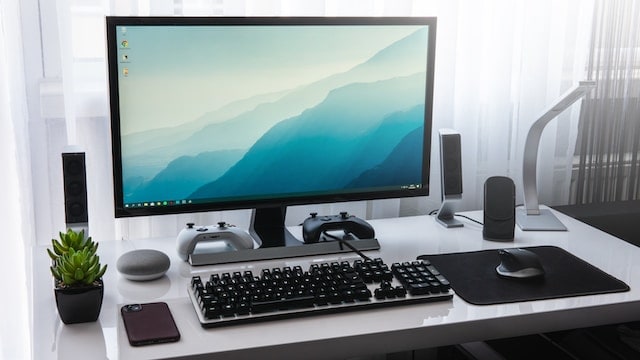
To ensure the protection of sensitive data, art and design schools must prioritize the implementation of effective security measures for securing student and faculty devices. With the increasing reliance on digital platforms and technologies in creative education, it is crucial to safeguard the devices used by students and faculty members. These devices often contain valuable intellectual property, personal information, and confidential research data that could be targeted by cybercriminals.
Implementing robust security measures not only protects against potential data breaches but also ensures the continuity of operations within the school. The table below outlines some essential security measures that art and design schools should consider implementing:
| Security Measure | Description |
|---|---|
| Strong Password Policies | Enforce the use of complex, unique passwords and implement regular password changes. |
| Multifactor Authentication | Require an additional form of authentication, such as biometrics or SMS verification. |
| Device Encryption | Encrypt data stored on devices to prevent unauthorized access in case of theft or loss. |
| Regular Software Updates | Keep operating systems, applications, and security software up to date to patch any vulnerabilities. |
Safeguarding Intellectual Property and Sensitive Information
With the increasing reliance on digital platforms and technologies in creative education, it becomes imperative for art and design schools to safeguard their intellectual property and sensitive information. As art and design schools collect and store a vast amount of intellectual property and sensitive information, such as student portfolios, research data, and proprietary designs, it is crucial to implement robust cybersecurity measures to protect against unauthorized access, theft, and misuse.
To safeguard intellectual property and sensitive information effectively, art and design schools should consider the following measures:
- Implement strong access controls: Utilize multi-factor authentication, strong passwords, and role-based access control to ensure that only authorized individuals can access sensitive information.
- Encrypt data in transit and at rest: Use encryption techniques to protect data when it is being transmitted or stored, preventing unauthorized interception or access.
- Regularly update and patch software: Keep all software and systems up to date with the latest security patches to address any vulnerabilities that could be exploited by cybercriminals.
Addressing the Risks of Cloud Storage and Sharing Platforms
Implementing robust cybersecurity measures is essential for addressing the risks associated with cloud storage and sharing platforms in art and design schools. These platforms provide convenient and efficient ways to store and share digital files, but they also pose significant security challenges. Art and design schools must take proactive steps to protect their sensitive information and intellectual property from unauthorized access, data breaches, and other cyber threats.
One of the main risks of using cloud storage and sharing platforms is the potential for data breaches. Art and design schools often handle large amounts of sensitive information, including student portfolios, research data, and copyrighted materials. A data breach could lead to the exposure or theft of this valuable information, causing serious reputational and financial damage to the institution.
To mitigate these risks, art and design schools should implement a comprehensive cybersecurity strategy that includes the following measures:
| Measure | Description |
|---|---|
| Encryption | Data should be encrypted both during transmission and at rest to protect it from unauthorized access. |
| Access controls | Access to cloud storage and sharing platforms should be strictly controlled, with strong authentication mechanisms and role-based access permissions. |
| Regular audits | Regular audits should be conducted to identify and address any vulnerabilities or weaknesses in the cloud storage and sharing platforms. |
Educating Students and Faculty on Cybersecurity Best Practices
Educating students and faculty on cybersecurity best practices is crucial in ensuring the protection of sensitive data and digital assets in art and design schools.
Students need to be equipped with the knowledge and skills to identify and mitigate cyber risks, such as avoiding phishing attacks and creating strong passwords.
Additionally, faculty members should receive comprehensive training on cybersecurity measures to effectively guide and support students in their digital practices.
Importance of Cybersecurity Education
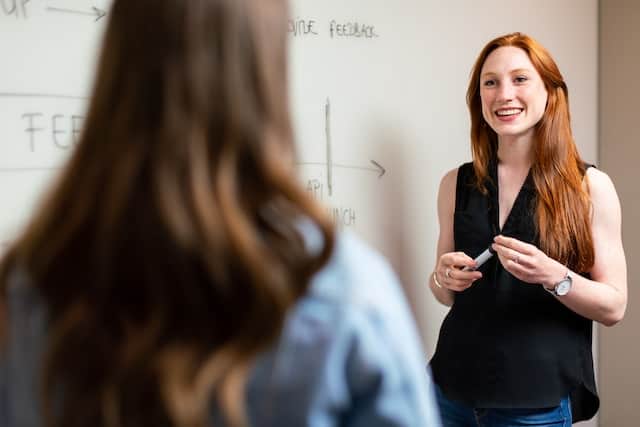
Ensuring a strong understanding of cybersecurity best practices is imperative for both students and faculty in art and design schools. As technology continues to advance, the risk of cyber threats becomes increasingly prevalent in the creative education sector. It is crucial to educate students and faculty on the importance of cybersecurity to protect sensitive information, digital portfolios, and design software usage.
Here are three key reasons why cybersecurity education is essential:
- Preventing data breaches: Cybersecurity education equips individuals with the knowledge to identify potential vulnerabilities and implement measures to prevent data breaches.
- Protecting intellectual property: Students and faculty in art and design schools often work with valuable intellectual property. Understanding cybersecurity best practices helps safeguard these assets from theft or unauthorized access.
- Promoting responsible online behavior: Educating students and faculty about cybersecurity encourages responsible online behavior, such as practicing good password hygiene and being cautious of phishing attempts.
Engaging Students in Cybersecurity
To effectively promote cybersecurity awareness among students and faculty in art and design schools, it is essential to emphasize the integration of cybersecurity principles into the curriculum. By incorporating cybersecurity education into the curriculum, students can develop a solid understanding of the risks and best practices associated with digital technologies in their field. This can be achieved through dedicated courses or by integrating cybersecurity topics into existing courses.
Educating students and faculty on cybersecurity best practices involves teaching them about password hygiene, safe browsing practices, data protection, and the importance of software updates. It is crucial to create a culture of cybersecurity awareness by organizing workshops, seminars, and guest lectures delivered by cybersecurity professionals. Encouraging students to participate in cybersecurity competitions and projects can also enhance their practical skills and understanding of cybersecurity.
Faculty Training on Cybersecurity
Faculty training on cybersecurity is crucial for promoting a secure and resilient learning environment in art and design schools. Educating both students and faculty on cybersecurity best practices helps to mitigate the risks associated with cyber threats and ensures the protection of sensitive information and intellectual property. Here are three key areas that faculty training should cover:
- Understanding cyber risks in creative education: Faculty should be aware of the specific cyber threats that art and design schools face, such as data breaches, ransomware attacks, and intellectual property theft.
- Protecting digital portfolios: Faculty should learn how to secure students’ digital portfolios, which often contain valuable and sensitive work that could be targeted by cybercriminals.
- Secure design software usage: Faculty should be trained on the proper use and security measures for design software, including regular updates, strong passwords, and safe downloading practices.
Implementing Strong Password Policies
Art and design schools should establish robust password policies to enhance cybersecurity measures. Implementing strong password policies is crucial in protecting sensitive information and preventing unauthorized access to digital resources. A strong password is typically a combination of uppercase and lowercase letters, numbers, and special characters. It should be at least eight characters long and avoid easily guessable information such as birthdates or common dictionary words.
To enforce strong password practices, all educational institutions including elementary schools can implement several measures. Firstly, they should require students, faculty, and staff to change their passwords regularly, typically every 90 days. This ensures that even if a password is compromised, it will not remain valid for an extended period. Additionally, schools can enforce password complexity requirements, preventing the use of weak or easily guessable passwords. This can be done by specifying a minimum length and mandating the inclusion of various character types.
Furthermore, implementing multi-factor authentication (MFA) adds an extra layer of security. MFA requires users to provide additional verification, such as a fingerprint or a one-time password, in addition to their password. This significantly reduces the risk of unauthorized access, as even if a password is compromised, the attacker would still require the additional factor to gain entry.
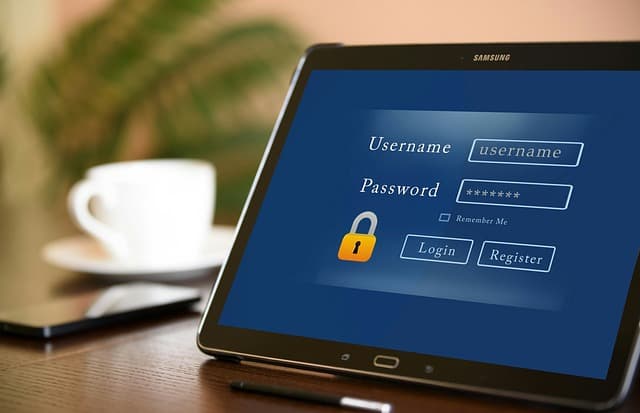
Utilizing Multi-Factor Authentication for Added Security
As art and design schools increasingly rely on digital platforms and software for teaching and collaboration, the need for robust security measures becomes paramount.
Utilizing multi-factor authentication (MFA) can significantly strengthen login security by requiring users to provide multiple forms of verification before accessing sensitive information. This prevents unauthorized access and enhances data protection, making it a crucial step in safeguarding the digital portfolios and design work of students and faculty.
Strengthening Login Security
Implementing multi-factor authentication is crucial for enhancing login security in art and design schools. With the increasing sophistication of cyber attacks, traditional password-based authentication is no longer sufficient to protect sensitive data and intellectual property. By implementing multi-factor authentication, art and design schools can add an extra layer of security to their login systems, ensuring that only authorized individuals can access their accounts.
Here are three key reasons why art and design schools should consider utilizing multi-factor authentication:
- Increased Security: Multi-factor authentication requires users to provide multiple forms of identification, such as a password, a fingerprint, or a one-time code sent to their mobile device. This significantly reduces the risk of unauthorized access, as even if one factor is compromised, the attacker would still need to bypass the other factors to gain access.
- Protection against Password Attacks: Multi-factor authentication helps mitigate the risk of password-related attacks, such as brute-force attacks and credential stuffing. Even if an attacker obtains a user’s password, they would still need the additional factor to successfully log in.
- Compliance with Industry Standards: Many regulatory frameworks and industry standards, such as the Payment Card Industry Data Security Standard (PCI DSS) and the General Data Protection Regulation (GDPR), require the use of multi-factor authentication to protect sensitive data. Implementing multi-factor authentication ensures compliance with these standards and helps avoid potential penalties and reputational damage.
Preventing Unauthorized Access
Utilizing multi-factor authentication is crucial for preventing unauthorized access in art and design schools.
With the increasing number of cyber threats targeting educational institutions, it is imperative to implement robust security measures to safeguard sensitive information and intellectual property.
Multi-factor authentication adds an additional layer of security by requiring users to authenticate their identity through multiple factors, such as something they know (password), something they have (smartphone or token), or something they are (biometrics).
This approach significantly reduces the risk of unauthorized access, as it becomes much harder for an attacker to bypass multiple authentication factors.
Enhancing Data Protection
To enhance data protection in art and design schools, the implementation of multi-factor authentication is vital. Cybersecurity threats are becoming increasingly sophisticated, and traditional username and password authentication methods are no longer sufficient to protect sensitive data.
By incorporating multi-factor authentication, schools can significantly enhance their data protection measures. This authentication method requires users to provide multiple forms of verification before gaining access to their accounts, making it much more difficult for hackers to compromise sensitive information.
The benefits of multi-factor authentication include:
- Increased security: Multi-factor authentication adds an extra layer of security by requiring users to provide additional verification factors, such as a fingerprint scan or a unique security code.
- Mitigation of password-related risks: By implementing multi-factor authentication, schools can reduce the risk of password-related issues, such as weak passwords or password reuse.
- Compliance with data protection regulations: Many data protection regulations, such as GDPR, require organizations to implement strong authentication measures. Multi-factor authentication helps schools meet these requirements and avoid potential penalties.
Protecting Digital Portfolios and Artwork From Theft or Manipulation
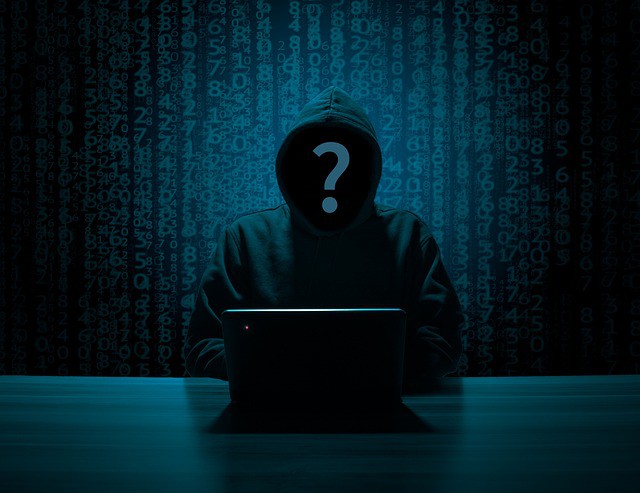
Art and design schools must prioritize safeguarding digital portfolios and artwork against theft or manipulation with robust cybersecurity measures. The digital age has opened up new possibilities for artists and designers to display their work online, but it has also increased the risk of unauthorized access and tampering. To address these concerns, institutions should implement a comprehensive cybersecurity strategy that includes encryption, access controls, and regular backups of digital assets.
One effective way to protect digital portfolios and artwork is through the use of encryption. By encrypting files, schools can ensure that only authorized individuals have access to the content. Additionally, access controls should be implemented to restrict who can view, edit, and download the artworks. This can be achieved through the use of strong passwords, multi-factor authentication, and user permissions.
Regular backups of digital assets are crucial in case of data loss or manipulation. By creating regular backups, schools can restore the original versions of the artwork in the event of a cyber attack or accidental deletion. It is important to store these backups in a secure location, such as an off-site server or cloud storage service.
In summary, protecting digital portfolios and artwork from theft or manipulation requires a multi-layered approach that includes encryption, access controls, and regular backups. By implementing these cybersecurity measures, art and design schools can ensure the integrity and security of their students’ work.
| Measures | Description | Examples |
|---|---|---|
| Encryption | Converts data into a code to prevent unauthorized access | AES, RSA |
| Access Controls | Restricts who can view, edit, and download the artwork | Passwords, multi-factor authentication, user permissions |
| Regular Backups | Creates copies of digital assets for restoration in case of data loss or manipulation | Off-site servers, cloud storage |
Securing Design Software and Licensing Agreements
Securing design software and licensing agreements is crucial for art and design schools to protect their intellectual property and ensure compliance with software usage terms.
Implementing measures to prevent software piracy, such as utilizing license management tools and monitoring software installations, can help prevent unauthorized usage and potential legal issues.
Additionally, regularly reviewing and updating licensing agreements can ensure that the school is using the software within the terms and conditions specified by the software vendors.
Software Piracy Prevention
Design schools must diligently employ effective measures to regularly prevent software piracy and ensure the secure and legal usage of design software through robust licensing agreements. Software piracy poses significant risks to art and design schools, including financial loss, legal liabilities, and reputational damage.
To prevent software piracy, schools should consider implementing the following measures:
- Conduct regular audits: Schools should regularly review their software installations and licenses to ensure compliance and identify any unauthorized or pirated software.
- Educate students and staff: It is essential to educate students and staff about the importance of software licensing and the consequences of software piracy.
- Implement software asset management tools: These tools can help schools track software installations, manage licenses, and detect any unauthorized usage.
Ensuring License Compliance
How can art and design schools ensure compliance with licensing agreements for their design software? Ensuring license compliance is crucial for art and design schools to avoid legal and financial consequences. By implementing effective strategies, schools can protect themselves from software piracy and unauthorized usage. One approach is to establish a robust software asset management system that includes regular audits to ensure all software installations are properly licensed. Additionally, schools should educate their students and staff about the importance of licensing agreements and the consequences of non-compliance. Providing access to legitimate software through licensing agreements not only protects the school but also ensures that students have access to the tools they need to succeed. Compliance with licensing agreements is an essential aspect of cybersecurity for art and design schools.
| Strategies for Ensuring License Compliance |
|---|
| 1. Implement a software asset management system |
| 2. Conduct regular audits of software installations |
| 3. Educate students and staff about licensing agreements |
| 4. Provide access to legitimate software through licensing agreements |
| 5. Monitor software usage to detect any unauthorized installations |
Monitoring and Managing Network Security
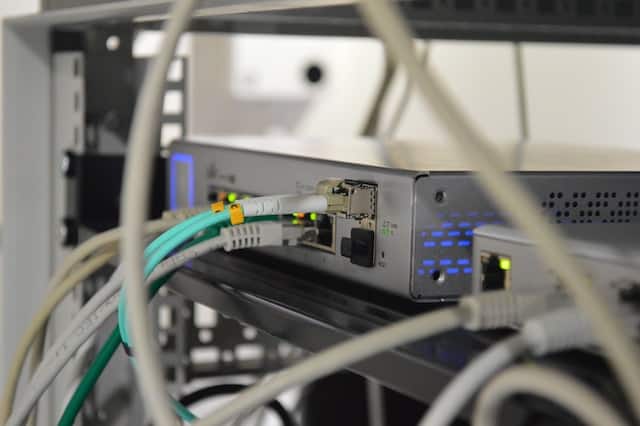
To ensure the protection of sensitive data and mitigate cyber threats, it is essential for art and design schools to diligently monitor and manage network security. With the increasing reliance on digital systems and connectivity, art and design schools are becoming more vulnerable to cyber attacks.
Here are three key aspects that art and design schools should consider when monitoring and managing network security:
- Continuous Network Monitoring: Art and design schools should implement robust network monitoring tools and techniques to detect any unauthorized access or suspicious activities. Continuous monitoring allows for real-time threat detection and response, minimizing the potential impact of cyber incidents.
- Regular Vulnerability Assessments: Conducting regular vulnerability assessments helps identify potential weaknesses in the network infrastructure. By identifying and addressing vulnerabilities promptly, art and design schools can proactively reduce the risk of cyber attacks.
- Access Control and User Management: Implementing strong access control mechanisms and user management practices is crucial to safeguard sensitive data. This includes enforcing strong passwords, implementing multi-factor authentication, and regularly reviewing user access privileges.
Developing an Incident Response Plan for Cyber Threats
Art and design schools should regularly and proactively develop an incident response plan to efficiently address cyber threats. An incident response plan is a documented set of procedures that outlines how an organization will respond to and recover from a cyberattack or data breach. It is essential for art and design schools to have such a plan in place to minimize the impact of cyber threats on their digital assets and sensitive information.
The first step in developing an incident response plan is to conduct a thorough risk assessment. This involves identifying potential cyber threats that the school may face, assessing their likelihood and potential impact, and prioritizing them based on their severity. Once the risks have been identified, the school can then develop appropriate response procedures and allocate resources accordingly.
An effective incident response plan should include clear roles and responsibilities for different stakeholders, such as IT staff, faculty, and administrators. It should also outline the steps to be taken in the event of a cyber incident, including incident detection, containment, eradication, and recovery. Additionally, the plan should establish communication protocols for notifying affected individuals, as well as legal and regulatory authorities, if necessary.
Regular testing and updating of the incident response plan is crucial to ensure its effectiveness. Schools should conduct periodic simulations and exercises to test the plan’s efficacy and identify any weaknesses or gaps. Any changes in the school’s IT infrastructure, technologies, or operating procedures should also be reflected in the plan.
Frequently Asked Questions
How Can Art and Design Schools Protect Their Digital Portfolios From Theft or Manipulation?
Art and design schools can protect their digital portfolios from theft or manipulation by implementing robust cybersecurity measures such as strong access controls, encryption, regular backups, and continuous monitoring for any suspicious activity or unauthorized access attempts.
What Are the Unique Cybersecurity Challenges Faced by Art and Design Schools?
Art and design schools face unique cybersecurity challenges due to the high value of their digital assets, such as creative portfolios. Protecting against theft, manipulation, and unauthorized access requires robust security measures and continuous vigilance.
How Can Art and Design Schools Secure Their Design Software and Licensing Agreements?
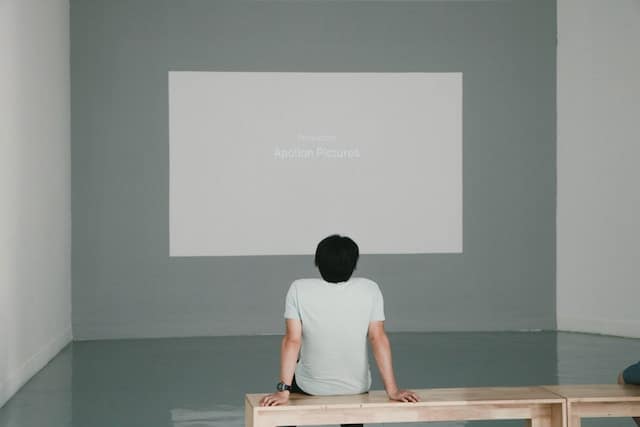
Art and design schools can secure their design software and licensing agreements by implementing robust access controls, regularly updating software with security patches, conducting regular vulnerability assessments, and ensuring compliance with licensing terms and agreements.
What Are the Best Practices for Educating Students and Faculty on Cybersecurity?
The best practices for educating students and faculty on cybersecurity involve comprehensive training programs that cover topics such as identifying and mitigating cyber risks, protecting personal and institutional data, and promoting safe online behaviors.
How Can Art and Design Schools Safeguard Intellectual Property and Sensitive Information?
To safeguard intellectual property and sensitive information in art and design schools, robust cybersecurity measures must be implemented. This includes securing networks, implementing access controls, encrypting data, and educating staff and students on best practices to mitigate cyber risks.
Conclusion
In conclusion, cybersecurity is a critical aspect of ensuring the safety and integrity of digital assets in art and design schools. By understanding the unique challenges faced in this field and implementing robust security measures, these institutions can protect sensitive information, intellectual property, and personal data.
It is imperative to establish secure practices for device usage, cloud storage, and design software, as well as monitor network security. By doing so, art and design schools can foster a secure environment that promotes creativity and safeguards their digital assets.
Like a fortress protecting its treasures, cybersecurity measures in art and design schools shield the creativity and personal information of students and faculty, ensuring a sanctuary where innovation can thrive.
